Twilight Imperium is one of the finest board games of all time. The 4x space game is four editions deep and it absolutely sucks its players into a day-long struggle for the galaxy full of politicking, squabbling, maneuvering, fighting, backstabbing, alliances and outright fun. The biggest downside to Twilight Imperium is the play time, often in the 6-8+ hour range, meaning that for a lot of players, myself included, it is more of an annual event rather than a game you just pluck off the shelf and decide to play on any given game night.
Enter Twilight Inscription, Fantasy Flight’s brand new game that promises to be “The Epic Roll & Write Experience”, with the ambitious aim of abstracting the Twilight Imperium experience into a game-night-able roll and write that can still accommodate up to 8 players, all vying to become the new ruling force in the galaxy score the most victory points. Twilight Inscription does indeed manage to abstract Twilight Imperium, but in so doing it also completely misses the mark on the things that make Twilight Imperium so special. With that being said, this is still a worthwhile game, you simply have to table it with the proper expectations.
What is Twilight Inscription?
Twilight Inscription is, as noted right on the box, a roll and write game, although it aims to do more than the typical filler weight roll and write and ends up being a chunky, thinky puzzle that really lets you dig in and plan and strategize. The meat of the planning and strategizing revolves around the decision of which of the four sheets available to you (Warfare, Navigation, Expansion and Industry) you’ll spend your resources on each round (spent by marking each sheet with the included chalk pens). Interspersed between the Strategy rounds the game will occasionally throw in a diplomacy round in which players have to decide on the outcomes of an agenda by voting for or against it, an income round that lasts all of 20 seconds, and warfare rounds, where players will add up their military might for a given sector of space and compare it to each of the players sitting next to them. Optimizing your strategy to best take advantage of the resources provided via the cards and dice, while simultaneously ensuring you are prepared for the coming votes and fisticuffs, is essentially the backbone of Twilight Inscription. This game is a puzzle through and through and really sits more comfortably in the multiplayer-solitaire than it does in 4X space opera.
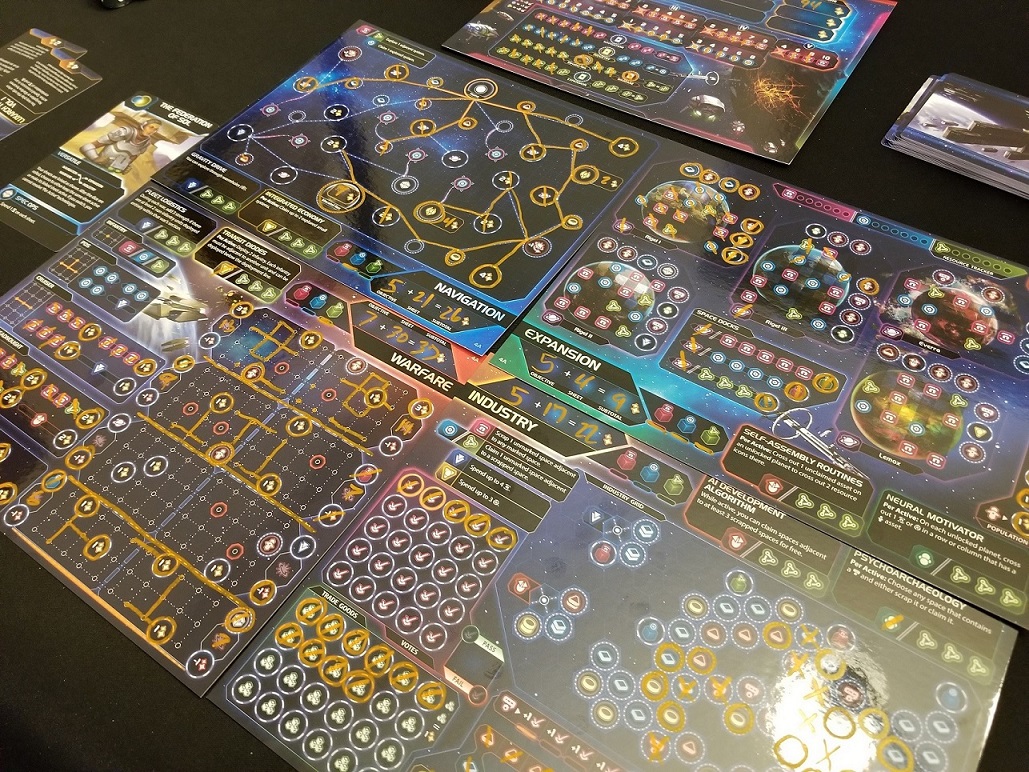
How Does It Feel To Play Twilight Inscription?
Twilight Imperium is a puzzle. An exercise in optimization, planning and knowing when the best time to utilize your faction’s (of which there are 24 unique factions available) abilities and which of the available global objectives to shoot for. Victory points are the name of the game here, and so having a cohesive plan in mind is really the only effective way to rack up a large tally. The majority of the game will see each player, regardless of player count, focused solely on their own boards, only looking up from time to time to vote or compare warfare numbers, and even less frequently to check on the shared global objectives in order to race their opponents to be the first to complete them, and thus claim the larger points haul.
Ultimately this ends up meaning that player count really isn’t all that important, and it can actually be a detriment to everyone’s enjoyment if one person plays at a slower pace than all the rest. You simply can’t move on until absolutely everyone is ready each round, but there is next to zero actual player interaction. This is effectively the polar opposite to what makes Twilight Imperium so great. Even though the game takes an incredibly long time to play, the heart and soul of the game is the interaction between players, so the larger the player count the more engaging and interesting every individual turn gets, because nearly every action is relevant to every other player.
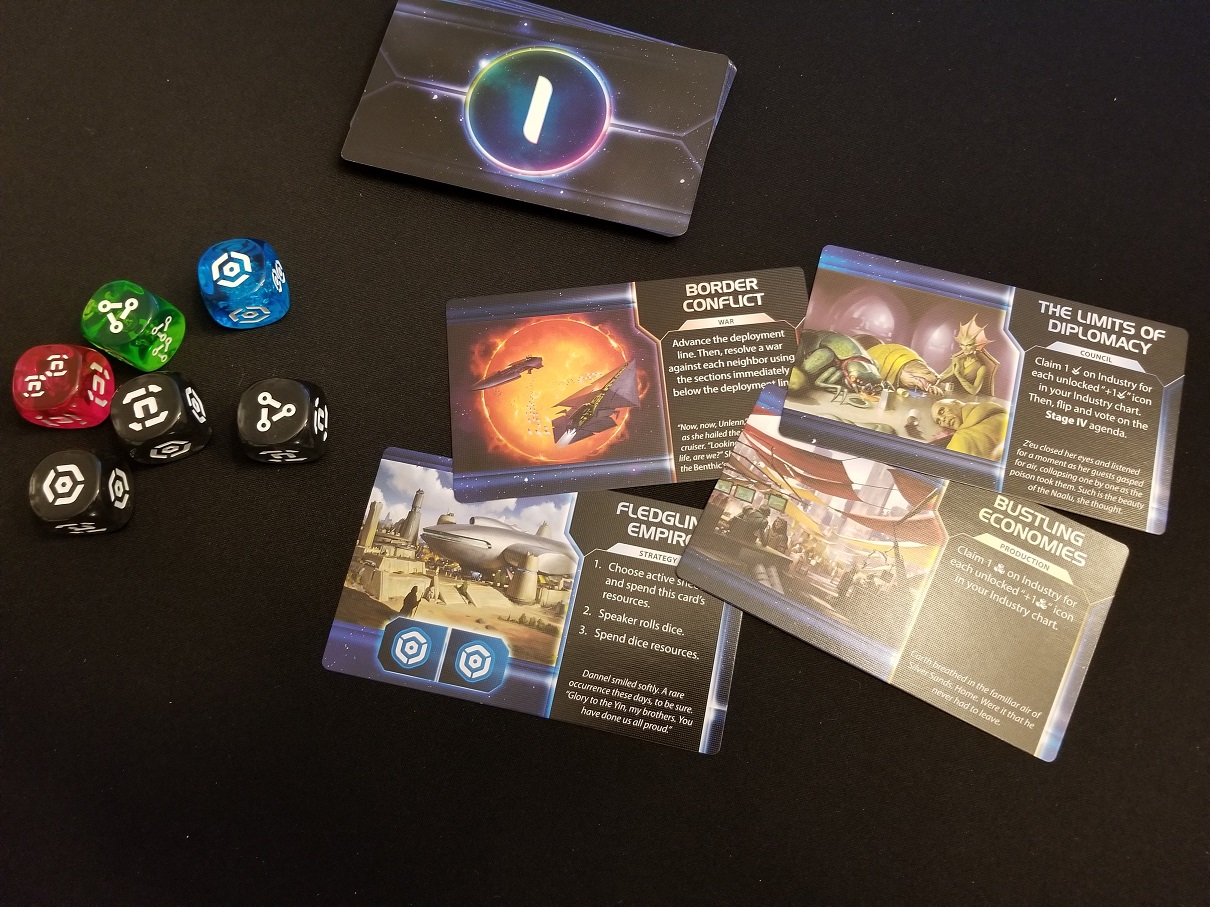
On the flip side, Twilight Inscription encourages each player to put their head down and concentrate on what they are doing now, and what they want to do in the future, only rarely glancing up to give any consideration to the other players when the game forces you to. Even the semi-interactive bits, voting on agendas and “combat”, don’t really build up any kind of tension between the players as the votes usually only have a mild, one time effect, and the fights are quite literally just a comparison of numbers with the bigger number winning.
The use of the Twilight Imperium IP, and the expectation that this game is a distillation of that game’s substance into a more abstract form really don’t do the game any justice because it does such a good job of distilling the mechanics of Twilight Imperium down that it distills the soul right the hell out. Now, having said that I will admit that the more I play Twilight Inscription the more I like it, but I’ve also completely shifted my expectations for the game, and in making that adjustment I’ve really started to see just what this game has to offer.
Does Twilight Inscription Set Itself Apart From Other Roll And Writes?
Twilight Inscription is quite a bit heavier than the other roll and writes I’ve played. Rather than being a filler to medium weight game, it represents a full blooded strategy experience that clocks in in the 90 – 120 minute range on average for my group. Instead of being something to play as a palate cleanser, such as a game like Cartographers, Twilight Inscription is demanding and long enough that it needs star billing for a game night meaning that it’s going to be competing with your group’s favorite games for time and table space. Due to the lack of meaningful interactions with other players, this may be a perfect fit for your group, especially if you tend to lean towards Euro games that are competitions to accrue points rather than direct competitions against your opponents.
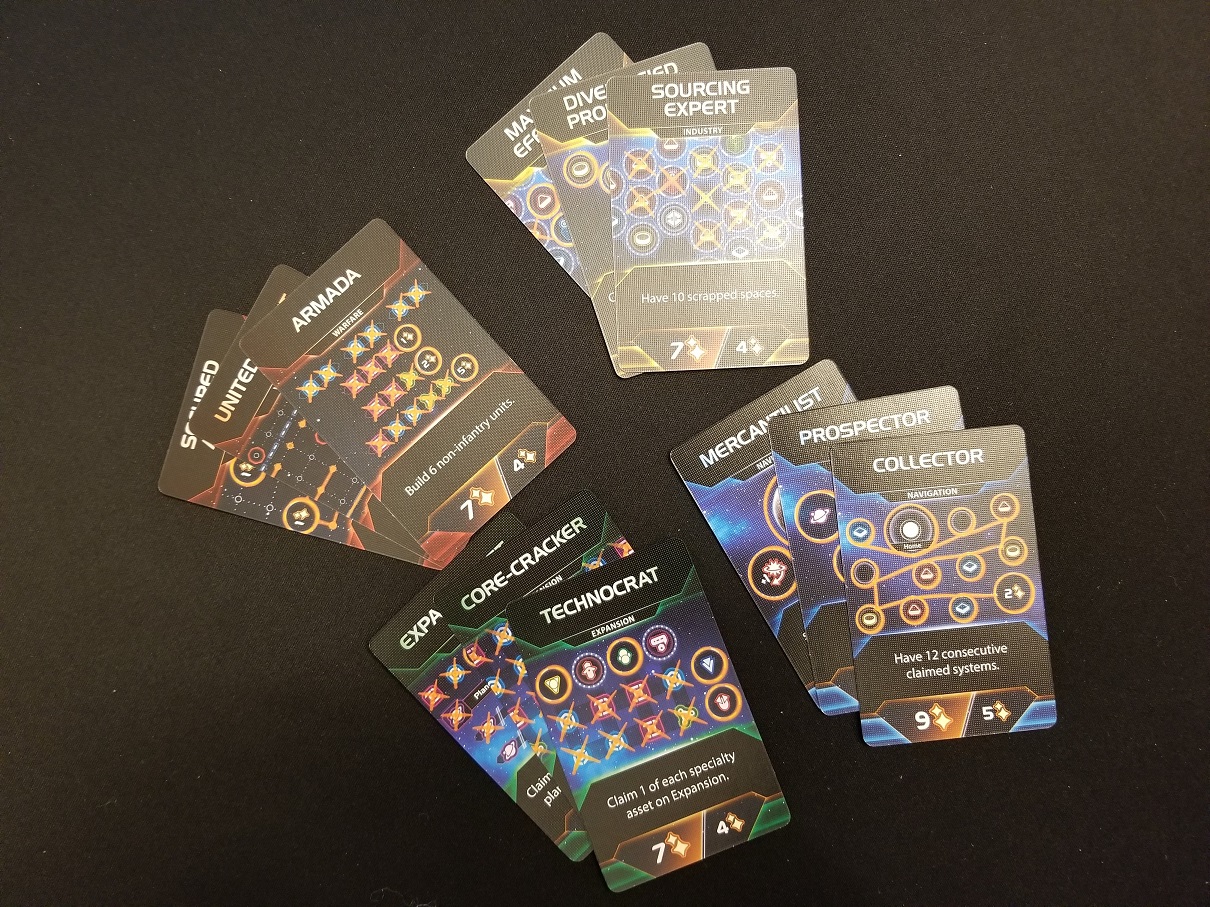
Twilight Inscription also pulls off a neat trick in the fact that it’s just as satisfying to play with only one or two players. Most other roll and writes aren’t robust enough to stand on their own in this way, and the depth of Twilight Inscription, coupled with it’s strength and fun at a lower player count means that it could easily scratch the strategy-itch for players who can’t consistently field a full table of players.
Does Twilight Inscription Offer A Galaxy Of Options, Or Are The Stars And Planets Simply A Veneer?
As mentioned earlier Twilight Inscription comes with an incredible array of unique factions. All 24 factions from the Twilight Imperium universe are present, and they each have their own ability and power. Those abilities and powers lend themselves to different strategies, and encourage players to experiment and figure out how best to use each faction effectively. This also means that there are some that are simply easier to use, and some that, at least in the handful of games that I’ve played, appear to be far more powerful than others. This does mean that experienced players can handicap themselves when playing against newer players, but it also can mean that scores can vary widely if one player doesn’t manage to effectively make use of their faction, or if they choose a strategy that doesn’t gel with their given faction. All in all that much variety is a good thing, balance issues aside, and it lends an incredible amount of longevity and reply factor to the game. On top of the faction mix, Twilight Inscription comes with 8 full sets of double sided player boards. One side of each set is the same, but the other side is unique, meaning the combination of player boards and factions is astronomical.
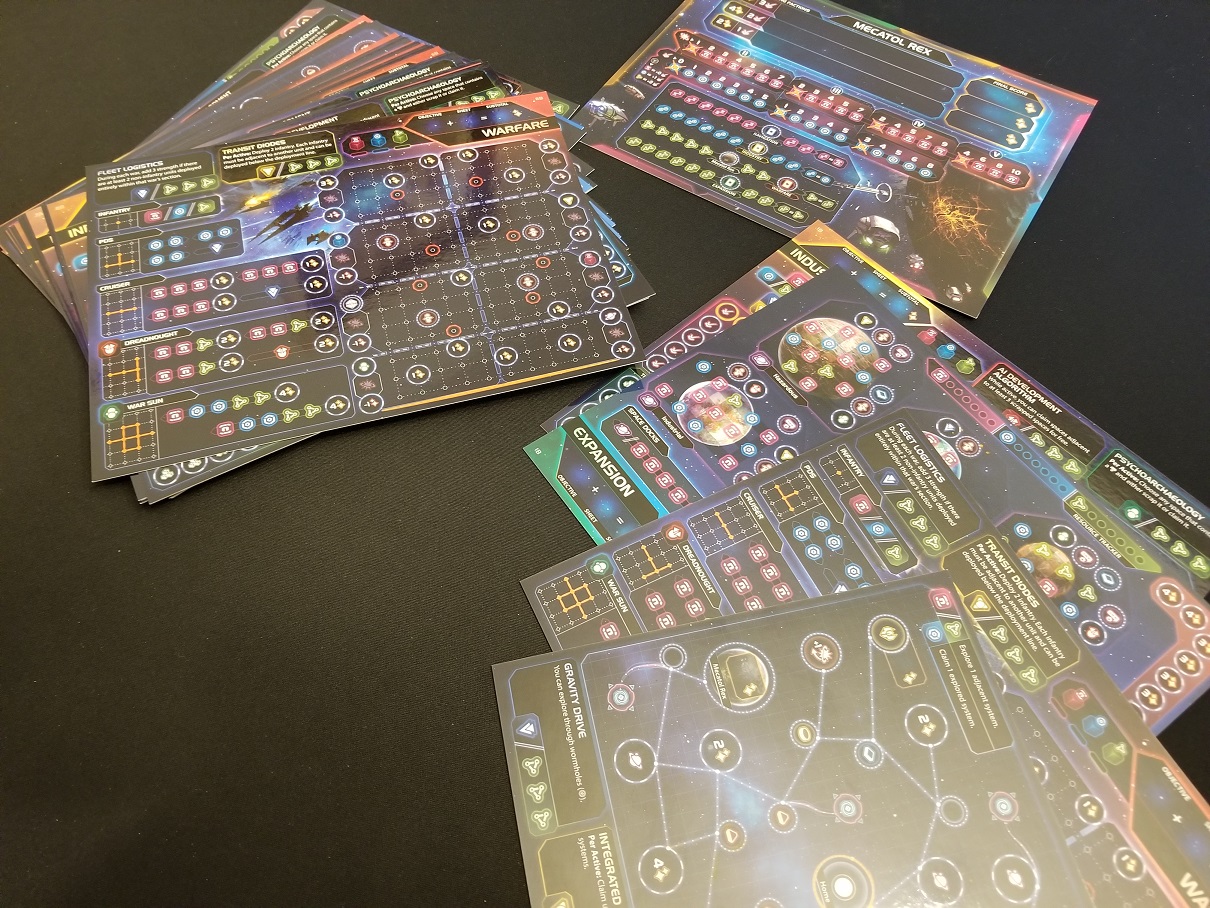
On the flip side of the coin, Twilight Inscription comes with a limited deck of Event cards. The Event cards determine what will happen in a round and which resources players will initially have to spend during Strategy phases. While the dice rolls do ensure that not every Strategy phase will offer exactly the same resources to spend, and the Event cards are randomized, there is only one set of cards in the game. Since the game is played in phases, it only takes a few plays to memorize the Event cards (there are only 3 phase 1 cards for example) and players will quickly become familiar enough with the cards to know, or at least have a very educated guess, which resources are going to be available next, and when the non-Strategy cards should be showing up (Diplomacy/Warfare/etc). The problem here is the lack of variety. The cards are sorted in a random order each turn, but the fact that the game only has the singular set means that experienced players are going to have an extreme advantage over players that haven’t seen the flow of the game enough. This does mean that, as you play more, you can formulate longer and longer game plans, but be aware that it also means that experienced players are going to just crush newer players.
What Are Our Final Thoughts On Twilight Inscription?
While the comparisons to Twilight Imperium are inevitable based on the setting and the marketing of Twilight Inscription, those comparisons don’t do the game justice. Don’t dive into this game expecting to come out the other side with the same experience that you’d get from a full play of Twilight Imperium. Instead approach Twilight Inscription as a deep, crunchy and brain burning puzzle that really shines at lower player counts. Twilight Inscription isn’t going to give you the same epic space opera experience as Twilight Imperium, and players who are expecting a similar experience are almost certainly going to be let down. Conversely, if you approach Twilight Inscription looking for a crunchy puzzle that lets you dig in and ignore (for the most part) any other players that you are playing with there is really a lot to like about this experience. There really isn’t a whole lot of reason to seek out 7 other people to play Twilight Inscription with as the game actually plays better at lower player counts, and it also pulls off the neat trick of having a solitaire variant that is equally as fun as the multiplayer experience. Twilight Inscription is really more of a Euro game in practice, and when viewed from that lens it really can shine. Even though the game’s Event deck lacks variety, the number of factions, player boards and random objectives means that there is a lot of replay value to be had in the box.
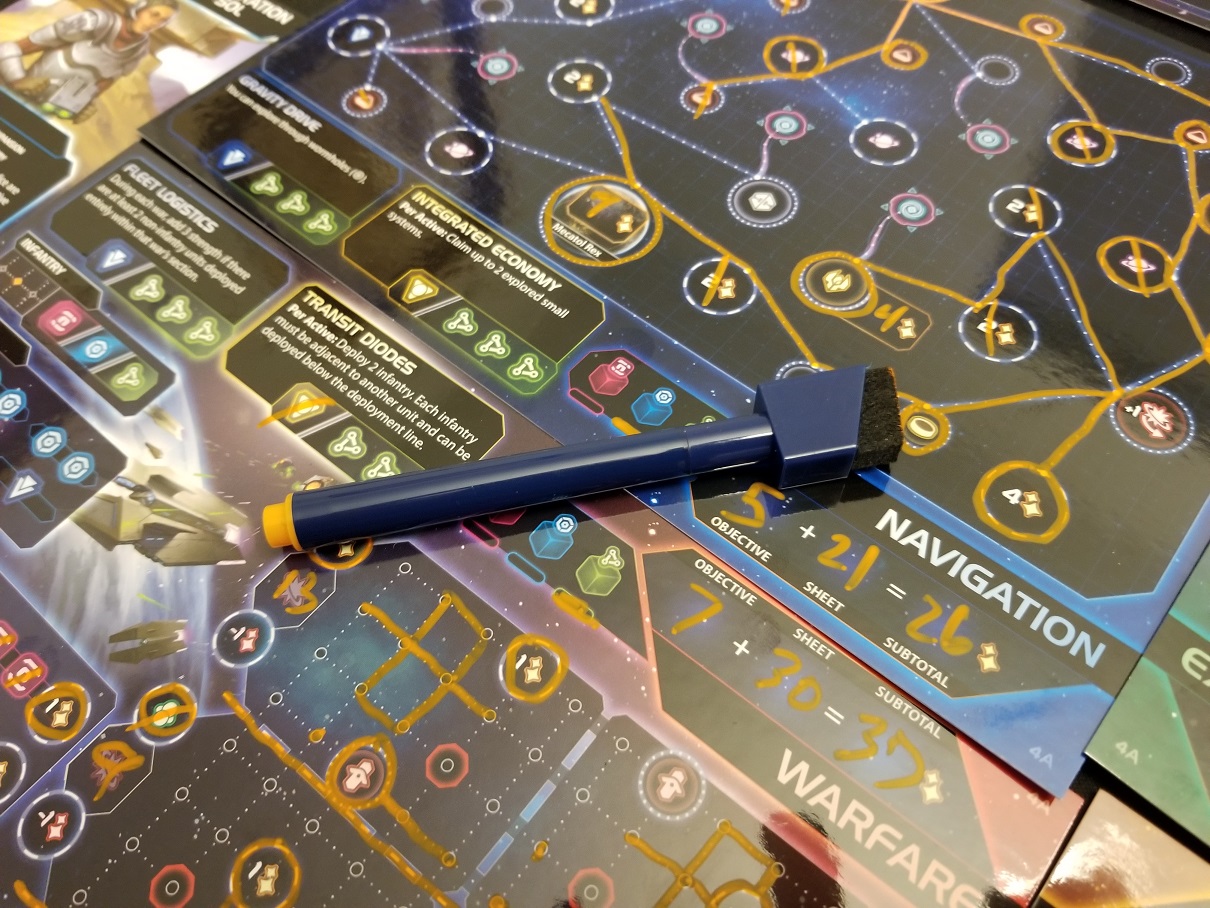
Should I Buy Twilight Inscription?
If you are looking for a shortened version of Twilight Imperium that is going to make you feel like you’ve played a galaxy spanning 4x space opera then you need to continue your search. On the other hand, if you like to play with a smaller group, and your group really likes puzzle-y Euro games that puts most of the path to success on each player’s choices rather than the goings on of their opponents then there really is a deep, fun experience to be had with Twilight Inscription. Even though it doesn’t truly scratch that epic 4x itch, it’s actually accessible enough and easy enough to table that you’ll be able to play it far more often than once or twice per year.
The copy of Twilight Inscription used for this review was provided by the publisher.
Twilight Inscription Review
Source: Pinay Guide Blog
Walang komento:
Mag-post ng isang Komento